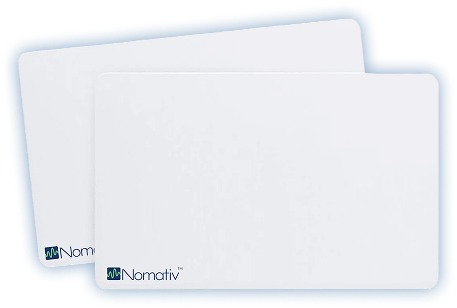Premium Blank ID Cards for Every Printer
Explore our range of high-quality blank ID cards—ideal for any printing system. Whether you need PVC, magnetic stripe, or rewritable cards, we’ve got the right fit for your organization’s needs.
Explore ID Cards
Simple, Smart & Budget-Friendly Printing Starts Here
Explore ID printers that are easy to use, cost-effective, and versatile enough for any organization. Start with a few questions — we’ll guide you to the best fit.
Ease Of Use
Designed with beginners in mind, these printers offer a straightforward setup and operation.
Affordable
Lower initial costs make them a budget-friendly option for organizations just starting with an ID card program.
Fast Printing Speed
Printing on one side of the card allows for quicker card production compared to dual-sided printers.
Versatile Applications
Suitable for various industries and purposes, including employee IDs, access control, membership cards, and more.
Find Your Perfect Printer – Start the Quiz!
How many cards do you need to print per year?
Book a 15-Minute Demo — See It In Action
Book a free 15-minute live demo — we’ll walk you through the printer, show you the Bodno software, and answer your questions

Personalized for
your use case

No setup
required

Choose your time
— zero pressure
FAQ
To purchase proximity cards, you’ll need to provide the format (e.g., 26-bit), facility code, and card number range. This ensures compatibility with your access control system and prevents duplication.
3-up key tags are PVC cards pre-cut into three detachable key-sized tags. They’re ideal for membership programs, loyalty cards, or access control, and can be printed with barcodes, logos, or member info.
Bodno’s standard PVC cards are CR80 size—3.375" x 2.125"—with a thickness of 30 mil. This is the same size as a credit card, making them compatible with most card printers, holders, and accessories.
2-track HiCo cards have two magnetic data tracks, while 3-track cards offer an additional third track for more data storage. Choose based on your encoding needs—3-track cards are often used for banking or advanced access systems.
These are thin PVC cards with a peel-off adhesive backing. They’re commonly used to convert non-printable surfaces (like clamshell proximity cards) into printable ones by sticking the Mylar card on top.
NTAG NFC cards contain embedded chips that support Near Field Communication (NFC), allowing users to interact with smartphones and other NFC-enabled devices with a simple tap. They’re ideal for mobile access, smart posters, digital business cards, and tap-to-trigger actions.
Bodno offers three NTAG options to match your data needs:
- NTAG213 – 144 bytes: share URLs, Wi-Fi credentials, or simple contact info.
- NTAG215 – 504 bytes: Amiibo storage, app triggers, or marketing content.
- NTAG216 – 888 bytes: smart automation, secure authentication, or rich media storage.
Boost Your ID Printing Knowledge With Our Educational Resources
Listen to industry insights, expert interviews, and tips on choosing the right ID card printer for your needs.
Listen to Our ID Card Printer Podcast













 Standard Blank PVC Cards
Standard Blank PVC Cards Mylar Adhesive-Backed Cards
Mylar Adhesive-Backed Cards  Proximity Cards (Nomativ)
Proximity Cards (Nomativ)  NTAG Cards
NTAG Cards  Software
Software Upgrades
Upgrades Bodno Trial
Bodno Trial Ben King
Ben King Benjamin Cohen
Benjamin Cohen Ciara Uychoco
Ciara Uychoco Eli Feig
Eli Feig Jack Richter
Jack Richter TotalCare
TotalCare Self Serve
Self Serve Printer Setup
Printer Setup License Status
License Status














